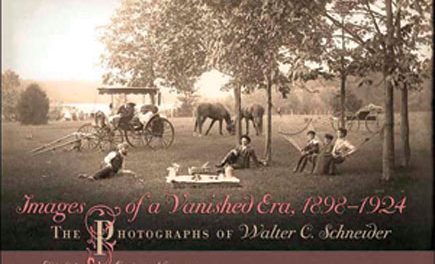Author: Chris McLaughlin
Publisher: Alpha – 331 pages
Book Review by: Laxmi Chaandi
When you do not have a lot of outdoor space around your house, or if you live in a condo, townhouse or an apartment, how do you plant fruits, vegetables, herbs or flowers?
And if you have adequate vertical space but very little ground, how do you ensure that your plants grow upwards instead of spreading around the sides horizontally?
This is the book you need to approach all your small-space gardening problems and act as your guide. It is written by someone who has more than 30 years of experience on this subject. Chris McLaughlin is not just a gardener; she is an extensive writer on the subject. Chris has authored two other Complete Idiot’s Guides. One is on composting and the other on heirloom vegetables.
Chris McLaughlin also writes for two magazines: The Heirloom Gardener and Urban Farm and contributes to www.VegetableGardener.com and www.BlissfullyDomestic.com.
Her website is www.ASuburbanFarmer.com
This book basically guides you to sow, tend and harvest your own delicious fruits, your healthful vegetables, your herbs to season your food and give it a little zing, and your ornamental plants to give your selected space a little color and liveliness.
Obviously, the amount of space you have available will determine what you can plant. But often, people are not aware that some plants can grow very large, and even much larger horizontally or vertically than your space. That could turnout to be a big problem. Consult this book before you plant.
Depending on where you live, you may have no other choice but to plant in earthen containers or cans. But do you know the roots of some of the plants you want to have, may need much more space than is available in your little containers. This can break your containers and make a mess. To prevent breakage and the mess, read how in this guide.
One solution to the problem of limited horizontal space is to build some structures that will help your plants grow vertically. What are some of those structures? Take a look at them in this book.
Having limited ground space, you would want to organize the layout of your garden in such a way that your selected vegetables do not grow in haphazard fashion or all over the place, looking like a garden of weeds. Study how to prevent that in this book.
Obviously you want to have a garden that has plump, juicy fruits and some deep-green and other colorful, healthy-looking vegetables that will also taste delicious. Do you know what to feed each plant, how much or how little of it and how often? Do you know how to prevent weeds from taking up space meant for plants, and pests from eating your plants and fruit? Then find out what chemicals you will need, in this book.
This book has a broad coverage of subjects relating to small-space gardening and it also provides you with a lot of details on them. There are five parts in this guide having a total of 20 chapters.
Part 1, “Living with a Little Landcape” informs you that small space is not a big problem; what are the characteristics of your part of the country; how to lay out your space for planting; and how to have color, coolness, fragrance, and other qualities of your garden that are pleasing to other senses, such as touch and even hearing.
Part 2, “Principles for Petite Plots” focuses primarily on the challenges of extra small spaces, such as container gardening; gardening on balconies, window boxes, roofs, and extra shady or ultra sunny areas; planting on raised beds; and planting vertically, such as climbing vines, twining and twirling plants.
Part 3, “Small-Space garden Themes” gives you ideas on various interesting themes for your garden, along with sketches. These are sensible alternatives to a mush-mush plethora of vegetables, fruits and flowers.
For example, in chapter 9 entitled “Eat Your Landscape,” the author suggests that “edible plants are easily integrated into your existing landscaping. You can tuck edibles into every part of your yard, whether it’s a perennial bed or under ornamental shrubs along the front of the house. Herbs are also natural candidates for edible landscaping.”
The author gives these examples of vegetables that can fit easily into your landscape:
Artichokes, beans, broccoli, bulbing fennel, cabbage, carrots, collards, eggplant, garlic, kale, leeks, lettuce, onions, parsnips, peas, peppers, radishes, rhubarb, spinach, Swiss chard and tomatoes.
Herbs that can be part of your edible landscape are: basil, chamomile, chives, dill, lavender, marjoram, oregano, parsley, rosemary, sage, thyme
Part 4, “Good Gardening Practices” reminds you that “it’s always about the soil”; how to manage pests and infestation (“the best defense is a good offense”); and how to outsmart weeds.
Part 5, “Plants for Small Spaces” gives you, in three of its chapters respectively, lists and characteristics of a large number of plants and flower bulbs; vines, climbers, ground covers and ornamental grasses; and small-space trees and shrubs.
But wait, that’s not all. This book has other goodies for you to help you become a capable small-space gardener. It has three appendices: a glossary of terms, resources for small-space garden specialists, and common and botanical plant names. For quick references to any item, look it up in the 15-page index.






